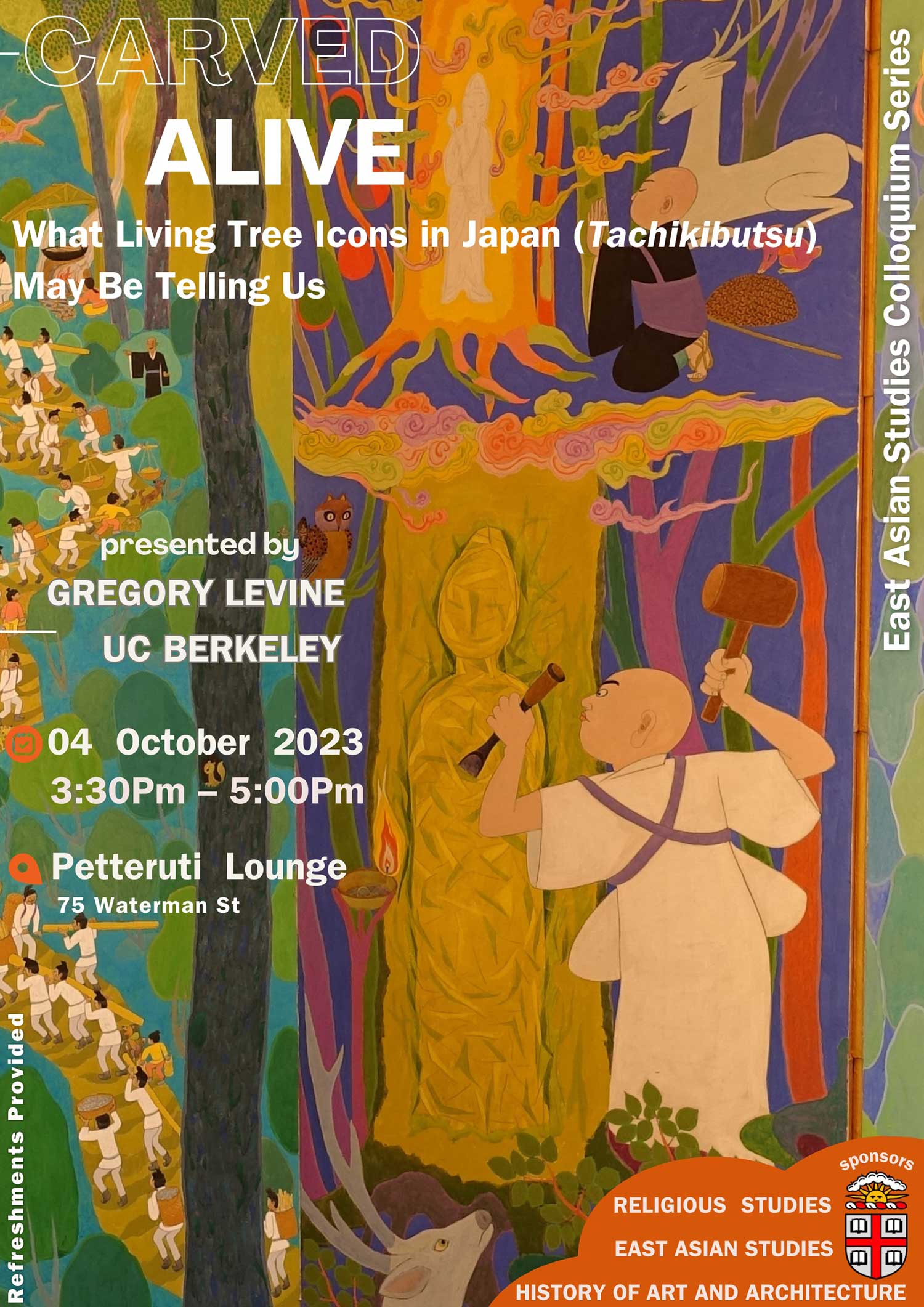
- Presented by: Gregory Levine, UC Berkeley.
- East Asian Studies Colloquium Series
- October 04, 2023 3:30 - 5:00PM
- Petteruti Lounge
75 Waterman St. - Refreshments provided
Buddhist Icons have been carved into living trees in Japan for centuries. In such icons we find dense and lively convergences: numinous trees and arboreal material, plant physiology and human presencing of the divine, ritual and soteriology, and human and more-than-human lives, inter-relationships, and contingencies. We find worlds brought into contact at blade’s edge in visualization, wounding, and healing. A sharp politics, if you will, of human incisions into biota and in the religious and visual-material systems that constitute the iconic. What might such trees carved alive, and trees-as-trees, disclose to us as we (re)imagine the ecological arts and humanities, Buddhist iconicity, and Buddhist environmentalism?
Greg Levine is Professor and recent Chair (Fall 2020-2023) of the Department of History of Art, UC Berkeley. His current book project is, A Tree and A Buddha: Imagining an Arboreal Humanism, and he is at work on a projected trilogy: Long Strange Journey: On Modern Zen, Zen Art, and Other Predicaments (2017); Buddha Heads: Fragments and Landscapes; and other Buddhas: White Supremacy and Buddhist Visual Culture. The recipient of a Guggenheim and other fellowships, he is an editorial board member of Artibus Asiae and the Journal of Art Historiography. His courses introduce global Buddhist visual cultures; eco art history; plunder, iconoclasm, and forgery; and the fragment in visual-material culture.